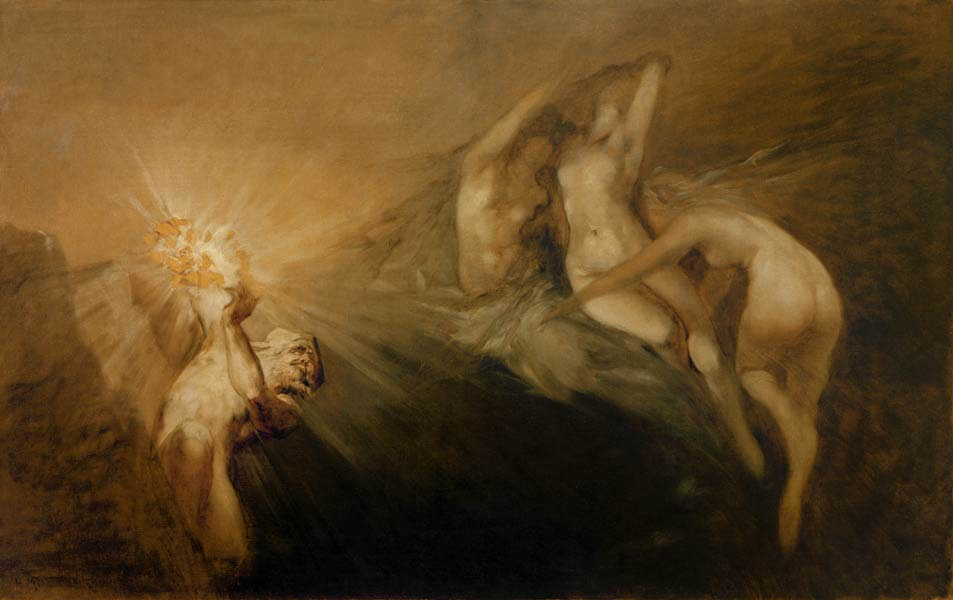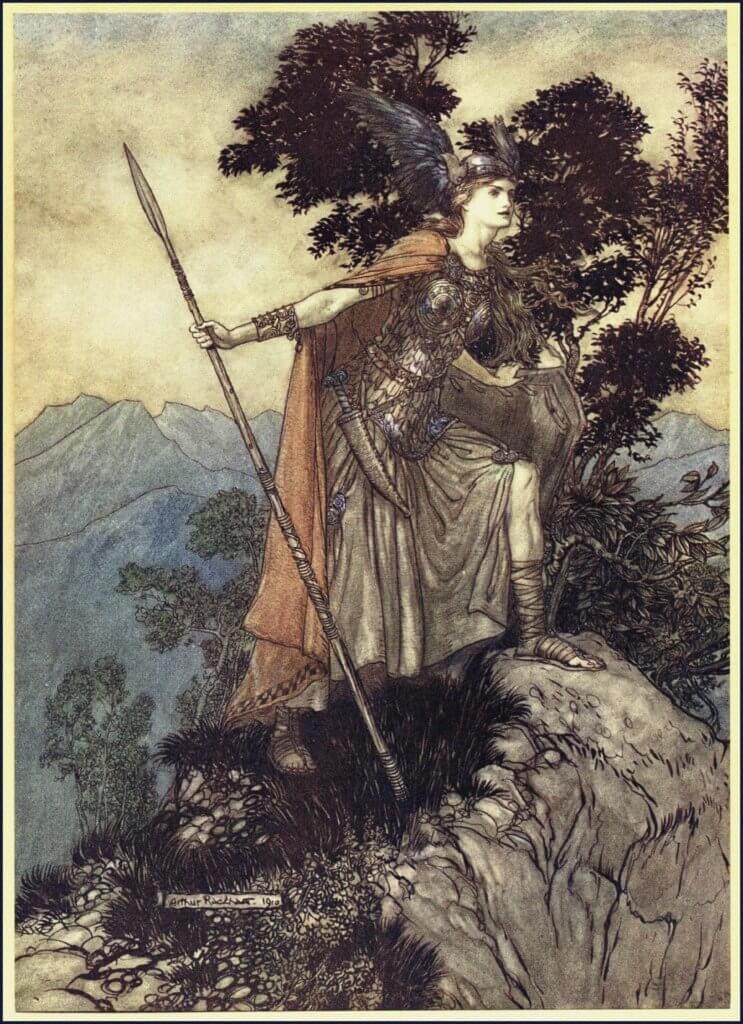Listen to the Poets
PARADIGM CHANGES, 13 Apr 2020
The Schumacher Center - TRANSCEND Media Service
11 Apr 2020 – Hunter Hannum was in the audience on October 19, 1991 for the Eleventh Annual E. F. Schumacher Lecture, delivered by Thomas Berry. Berry named his talk “The Ecozoic Era.” Hannum was so moved by the talk that he wrote a response “Wagner and the Fate of the Earth: A Contemporary Reading of The Ring,” finding themes in the German opera that mirrored those articulated by Berry, a Passionist priest.
From “The Ecozoic Era”:
The changes presently taking place in human and earthly affairs are beyond any parallel with historical change or cultural modification as these have occurred in the past. This is not like the transition from the classical period to the medieval period or from the medieval to the modern period. These changes reach far beyond the civilizational process, beyond even the human process, into the biosystems and even the geological structures of the Earth itself.
. . . The natural world is more sensitive than we have realized. Unaware of what we have done or its order of magnitude, we have thought our achievements to be of enormous benefit for the human process, but we now find that by disturbing the biosystems of the planet at the most basic level of their functioning we have endangered all that makes the planet Earth a suitable place for the integral development of human life itself. . . .
The biggest single question before us in the 1990s is the extent to which this technological-industrial-commercial context of human functioning can be made compatible with the integral functioning of the other life systems of the planet. . . . . Our efforts will be in vain if our purpose is to make the present industrial system acceptable. These steps must be taken, but according to my definition of the Ecozoic Era there must be more: there must also be a new era in human-Earth relations.
Hannum comments that “What Berry emphasizes is the urgent need for a new vision, a new story, to guide us into the ecological or what he prefers to call the ‘Ecozoic’ age, a period in which humankind must learn once again to live in harmony with the Earth.”
The Ring, Richard Wagner’s operatic depiction of the ancient tale of the Norse gods, Hannum argues, makes the connection between the violation of Nature and universal destruction. The Rheingold, watched over by the Rheinmaidens, is a symbol of Nature’s purity. It is violently wrested from them and forged into a ring of power. That violation places a curse on the ring.

Each of its successive male keepers meets with tragedy. Not till Brünnhilde takes the ring from the hand of the dying Siegfried, joins him on the funeral pyre in an act of love and self-immolation, and pledges the ring’s return to the Rheinmaidens out of the ashes, not till then is the curse lifted.
Hannum remarks, “To speak solely of a primal crime against Nature in The Ring is imprecise, for it is the Feminine as well that is the victim of violation throughout the work, and the villain is what we have come to recognize as the patriarchy, with all that this concept connotes for the contemporary mind. Wagner’s work anticipates the new story Berry finds necessary for our time: ‘The Ecozoic can come into existence only through an appreciation of the feminine dimension of the Earth, through a liberation of women from the oppressions and the constraints of the past.’”
Hannum goes on, “The return of the gold to its natural setting strikes us now as an anticipation of today’s movement toward ‘ecological restoration,’ the desire to make amends to a violated natural order. It is in this direction—and in this direction only—that many believe humankind’s ‘redemption’ lies, and it is this which gives meaning in contemporary terms to Brünnhilde’s ‘redemptive’ act.”
Hunter Hannum chose literature and music as a vehicle to muse on our current condition, the role of humans in shaping that condition, and the responsibility to address it. Thomas Berry, a Passionist priest, called for the collective forging of a New Story that details the healing of the rift through the influence of the Feminine.
It is Easter week and Passover, and soon Ramadan. Hinduism, Buddhism, Confucianism, and Taoism all celebrate sacred days during this same period. It is a time of introspection. Each of these traditions offer their own stories of the relationship of individuals to Nature, of the tragedies that ensue when this relationship is out of balance, and of how to begin the healing of that relationship. The poets of these traditions speak through their sacred texts – The Torah, The New Testament, The Quran, The Vedas, The Suttas, the teachings of Confucius, and the Tao Te Ching.
Perhaps it is time that we listen to the poets.
____________________________________________
Hunter Hannum died this week following a stroke earlier in the winter. Our heart-felt good wishes to his family. And our heart-felt good wishes to all those coming to terms with their own private and public grief at this time.
The Schumacher Center for a New Economics – Our Mission: To envision a just and sustainable global economy; apply the concepts locally; then share the results for broad replication. Founded in 1980 the Schumacher Center for a New Economics works to envision the elements of a just and sustainable global economy; undertakes to apply these elements in its home region of the Berkshires in western Massachusetts; and then develops the educational programs to share the results more broadly, thus encouraging replication. We recognize that the environmental and equity crises we now face have their roots in the current economic system.
Go to Original – centerforneweconomics.org
Tags: E. F. Schumacher, Economics, Paradigm change
DISCLAIMER: The statements, views and opinions expressed in pieces republished here are solely those of the authors and do not necessarily represent those of TMS. In accordance with title 17 U.S.C. section 107, this material is distributed without profit to those who have expressed a prior interest in receiving the included information for research and educational purposes. TMS has no affiliation whatsoever with the originator of this article nor is TMS endorsed or sponsored by the originator. “GO TO ORIGINAL” links are provided as a convenience to our readers and allow for verification of authenticity. However, as originating pages are often updated by their originating host sites, the versions posted may not match the versions our readers view when clicking the “GO TO ORIGINAL” links. This site contains copyrighted material the use of which has not always been specifically authorized by the copyright owner. We are making such material available in our efforts to advance understanding of environmental, political, human rights, economic, democracy, scientific, and social justice issues, etc. We believe this constitutes a ‘fair use’ of any such copyrighted material as provided for in section 107 of the US Copyright Law. In accordance with Title 17 U.S.C. Section 107, the material on this site is distributed without profit to those who have expressed a prior interest in receiving the included information for research and educational purposes. For more information go to: http://www.law.cornell.edu/uscode/17/107.shtml. If you wish to use copyrighted material from this site for purposes of your own that go beyond ‘fair use’, you must obtain permission from the copyright owner.

